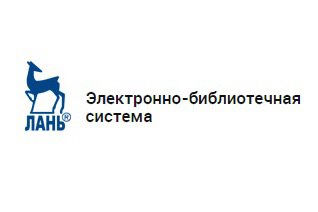| УДК 622.231 | DOI: 10.21440/0536-1028-2022-3-16-23 |
Azarov E. B. Comparative analysis of experimental research into the effect of lasting selfsynchronization
on a laboratory shaker with three and two vibration exciters. Izvestiya vysshikh uchebnykh
zavedenii. Gornyi zhurnal = Minerals and Mining Engineering. 2022; 3: 16–23. DOI: 10.21440/0536-1028-
2022-3-16-23
Introduction. Vibratory transport machines are widely used in the mining industry and other sectors of production. A more detailed analysis of working body oscillation parameters and vibration exciters self-synchronization is required to design vibratory transport machines with new properties. Vibratory machine dynamics was studied with a mathematical model, which made it possible to discover some interesting phenomena, for example, the effect that the authors called the effect of lasting self-synchronization.
Research objective is to experimentally confi rm the discovered phenomena using a laboratory shaker and assess the degree of these phenomena resistance.
Methods of research. In order to confi rm and carry out the follow-up study of the discovered phenomena, DVM-014 laboratory training facility was designed and manufactured. A set of experiments with two and three vibration exciters were carried out with the help of this facility.
Results. The article presents the results of experiments on detecting the effect of lasting self-synchronization under confi gurations with two and three vibration exciters and this phenomenon resistance to the changing position of the machine’s center of mass. Changes in the machine parameters are also given when either one of the two or two of the three vibration exciters are switched off.
Summary. Several conclusions have been made based on the experimental results. The most important of them in terms of technology is the following. The phenomenon of lasting selfsynchronization, if any, can be useful when there are pauses in the machine loading. It will signifi cantly reduce energy consumption by switching off one or two motors.
Keywords: vibratory transport machines; vibrating screen; self-synchronization; vibration exciter; dynamics; mathematical model.
REFERENCES
- Iudin A. V. Heavy duty vibrating feeders and screening feeders for transfer points. Ekaterinburg: UrSMU Publishing; 1996. (In Russ.)
- Vaisberg L. A., Korovnikov A. N., Baldaeva T. M. Innovative screens for building materials industry. Stroitelnye materialy = Construction Materials. 2017; 7: 52–55. (In Russ.)
- Blekhman I. I. Vibration mechanics and vibration rheology (theory and applications). Moscow: Fizmatlit Publishing; 2018. (In Russ.)
- Dresig H., Fildlin A. Schwingungen mechanischer Antriebssysteme: modellbildung, berechnung, analyse, synthese. Berlin, Heidelberg; 2014.
- Blekhman I. I. Dynamic systems synchronization. Moscow: Nauka Publishing: 1971. (In Russ.)
- Sperling L. Selbstsynchronisation statisch und dynamisch unwuchtiger Vibratoren. Technische Mechanik. 1994; 14(2): 85–96.
- Zhang X., Wen B., Zhao C. Vibratory synchronization transmission of a cylindrical roller in a vibrating mechanical system excited by two exciters. Mechanical Systems and Signal Processing. 2017; 96: 88–103.
- Zhang X., Gu D., Yue H., Li M., Wen B. Synchronization and stability of a far-resonant vibrating system with three rollers driven by two vibrators. Applied Mathematical Modelling. 2021; March; Vol. 91: 261–279.
- Balthazar J. M., Tusset A. M., Brasil R. M., Jorje L. P. An overview on the appearance of the Sommerfeld effect and saturation phenomenon in non-ideal vibrating systems (NIS) in macro and MEMS scales. Nonlinear Dynamics. 2018; 93(1): 19–40.
- Rumiantsev S. A. Simulating the dynamics of transitional processes of self-synchronizing vibratory machines. Izvestiya vysshikh uchebnykh zavedenii. Gornyi zhurnal = News of the Higher Institutions. Mining Journal. 2003; 6: 111–118. (In Russ.)
- Rumiantsev S. A. Dynamics of transitional processes and self-synchronization of motion in vibratory machines. Ekaterinburg: UB RAS Publishing; 2003. (In Russ.)
- Rumiantsev S. A., Azarov E. B. Non-stationary dynamic mathematical model of “vibratory machine–electrical system” in case of drive from asynchronous motor with squirrel-cage rotor. Transport Urala =Transport of the Urals. 2005: 1: 2–7. (In Russ.)
- Azarov E. B., Babkin A. V., Rumiantsev S. A., Shikhov A. M. Experimental verification of stability of the phenomenon of vibration exciter self-synchronization on laboratory vibration table. Transport Urala = Transport of the Urals. 2015; 1(44): 14–18. (In Russ.)
- Azarov E. B., Rumiantsev S. A., Shikhov A. M. Experimental vibration table to study oscillatory system dynamics. Transport Urala = Transport of the Urals. 2014; 4(43): 3–7. (In Russ.)
- Azarov E. B., Babkin A. V., Rumiantsev S. A., Shikhov A. M. Experimental study of electromechanical characteristics of vibration transport machines when coasting. Transport Urala = Transport of the Urals. 2015; 1(44): 92–96. (In Russ.)
- Ivanov-Smolenskii A. V. Electrical machine. In 2 vol. Vol. 1. Moscow: MEI Publishing; 2004. (In Russ.)









